

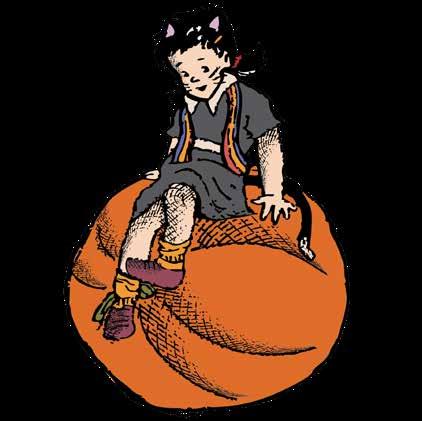
OCTOBER 8, 2025





OCTOBER 8, 2025




Colin Wishneski | Senior News Reporter
One year after Hurricane Helene, Boone community members are still feeling the aftermath of significant damage to their lives and homes.
Bugz Gallimore, a senior studio art major, was studying ceramics at Penland School of Craft in Bakersville as part of an exchange program with App State early last fall. When Helene struck town, Gallimore, along with the other students and staff at Penland, were stuck.
“None of the roads were safe, and we lost electricity,” Gallimore said. “We were stranded.”
After returning to their home in Boone, Gallimore faced a new problem: they found the duplex building they were renting had mold and a ceiling on the brink of collapse.
“My house had so much water damage; it was unlivable,” Gallimore said.
After a conflict with their rental agency about canceling their lease, Gallimore left Boone for the remainder of the semester and stayed with family in Wilmington. They received grants from the Center for Craft in Asheville, App State and the Federal Emergency Management Agency in order to find a new apartment. They returned to App State in the spring.
“I’m grateful for the relief that I got,” Gallimore said. “I would have had to leave if I didn’t get it.”
Gallimore is finishing their senior year and is on track to graduate this semester. After graduation, they plan to teach or move abroad for further education.
Because of its population and integration with App State, Boone has rebuilt faster than much of Western North Carolina. Caleb
Hignite, a recent App State graduate and co-creator of a new grassroots organization, Appalachian Reclamation Alliance, was unharmed by the storm and made an effort to help rebuild changed communities.
“I’ll never forget how the sky looked without power,” Hignite said.
“There was no light pollution, and the stars were so bright. I felt small.”
When Hignite was able to reach campus, he met with others who had experienced more of the hurricane’s effects and connected with the news cycle.
“I came out of everything physically OK,” Hignite said. “I was alive, and my house was fine. That weekend, I realized the gravity of the situation. I started work on Monday.”
He decided to start a photojournalistic project with his friends to document the aftermath of the storm and participate in aid efforts. Their work took them around Western North Carolina counties Avery, Mitchell and Yancey.
“Outside of Boone, the situation is a lot more dire,” Hignite said.
“We were doing supply runs until December.”
Over the course of the project, Hignite realized some recovering communities needed construction materials and manpower to build new homes more than they needed the food, clean water and clothes that were donated in droves from around the country.
“There are still a lot of people living in RVs,” Hignite said. “That’s at least a step up from the tents they had in the fall.”
Dalton George, a member of the Boone Town Council and mayor pro tempore, was inspired by his own experience as a renter to take action on housing after Helene. Three-fourths of Boone residents are renters, and when their homes saw damage, they were in uncharted legal territory. To respond to this, George co-authored a memorandum on tenant rights after the storm that included legal precedents and reminders of the rights a person has when they rent a house or apartment.

must be part-time residents. George said this is a start to improving tenants rights in Boone, but there is still work to be done.
“Helene resulted in the destruction of a lot of housing stock,” George said. “We also have high demand and not a lot of flat land to build on.”
While an App State student, George pushed the town to challenge predatory leasing practices. After graduating, he was elected to the town council in August of 2021. Since then, George has been a part of legislation that regulates owner-operated vacation rentals, ensuring the owners
George is running uncontested for Boone mayor with plans to take steps toward inclusionary housing policies, investing in more public works, protecting green space and reorganizing existing spaces with denser housing.
“Redevelopment isn’t a loss of the soul of the community,” George said. “This town is special, and if it’s not affordable and natural, we lose it.”
As the one-year milestone has passed, Hignite is determined to share his work and continue to bring attention to the relief efforts still needed in Western North Carolina.
“I’m not going to stop this work until every person hurt by the storm has their home back,” Hignite said. “And that’ll never be the case.”

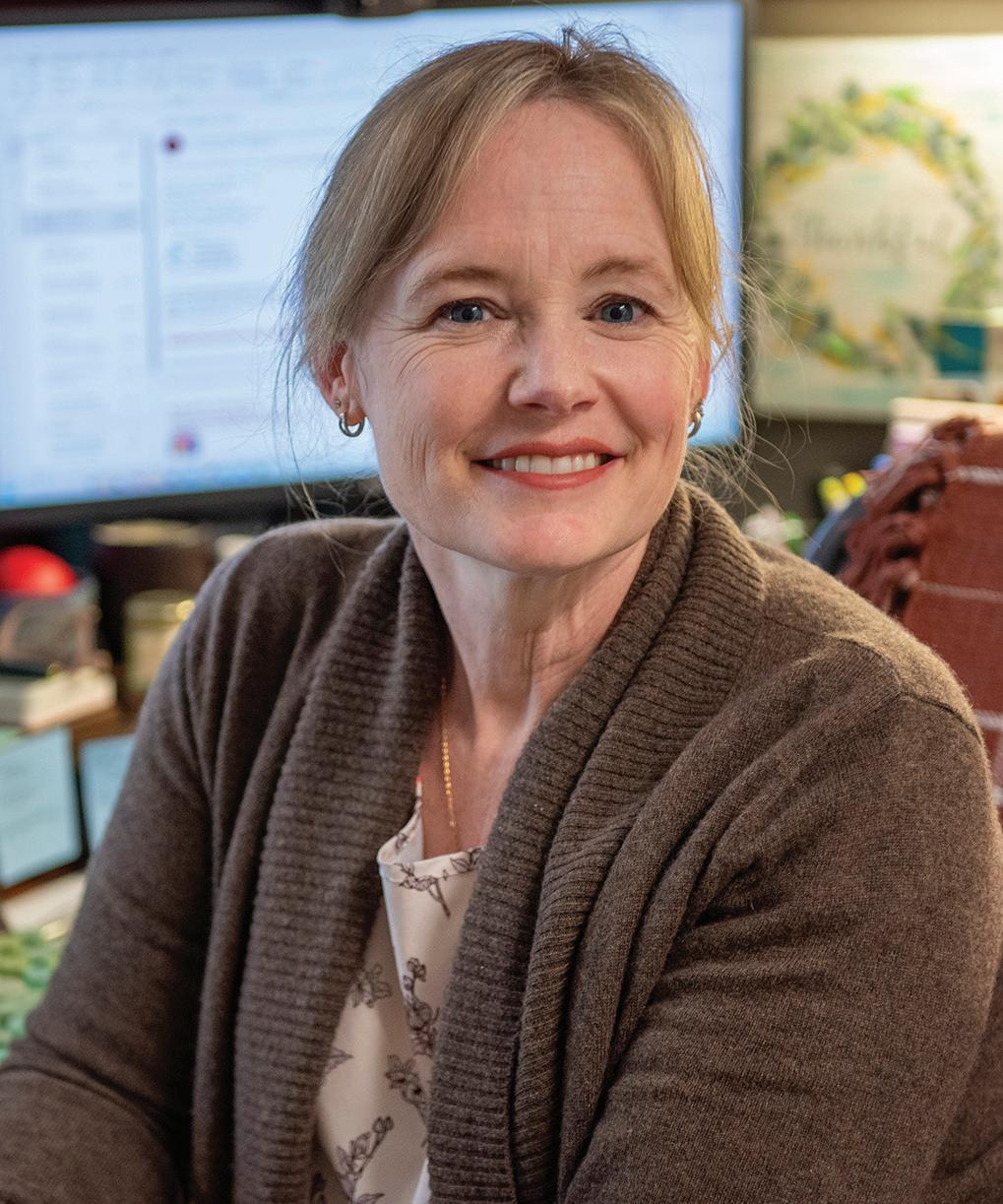
Madalyn Edwards | News Editor
Ateam comprised of App State members, local organizations, the town and the county worked around the clock to carry out emergency procedures during Hurricane Helene to ensure the safety of the community. While recovery efforts continue, many have reflected on the experience, implemented new protocols and built more reliable systems for communication.
Kristi Pukansky, the emergency planner and administrative assistant for Watauga County Emergency Services, said there is a great deal of pre-planning prior to natural disasters, such as Helene, from debris removal to stationing rescue services ahead of the storm.
Pukansky said departmental employees, community partners and public health officials are some of the many people who were involved with an emergency response team for the county.
On the day, Helene hit Watauga County, as soon as the emergency management team was able to travel to the office, Pukansky said it was “all hands on deck.” Around 30 people packed into the emergency operations room at the height of the response, and representatives from local organizations, such as AppalCart, power companies and school systems, maintained regular contact.
“It was a really multidimensional approach to everything,” she said.
A designated backup roll-over center in Chatham County and 911 texts via satellite were essential to the community’s response, Pukansky said.
“I really feel like we as a county have been so much further ahead because of our pre-planning and because of our community partners,” she said.
The emergency response team Is now expanding communication channels with the help of grant funding.
Pukansky said she is extremely grateful for all the community partners who came together during the time of need, including App State, Watauga Medics, the Watauga County Fire Marshal office and rescue staff, such as swift water rescue teams.
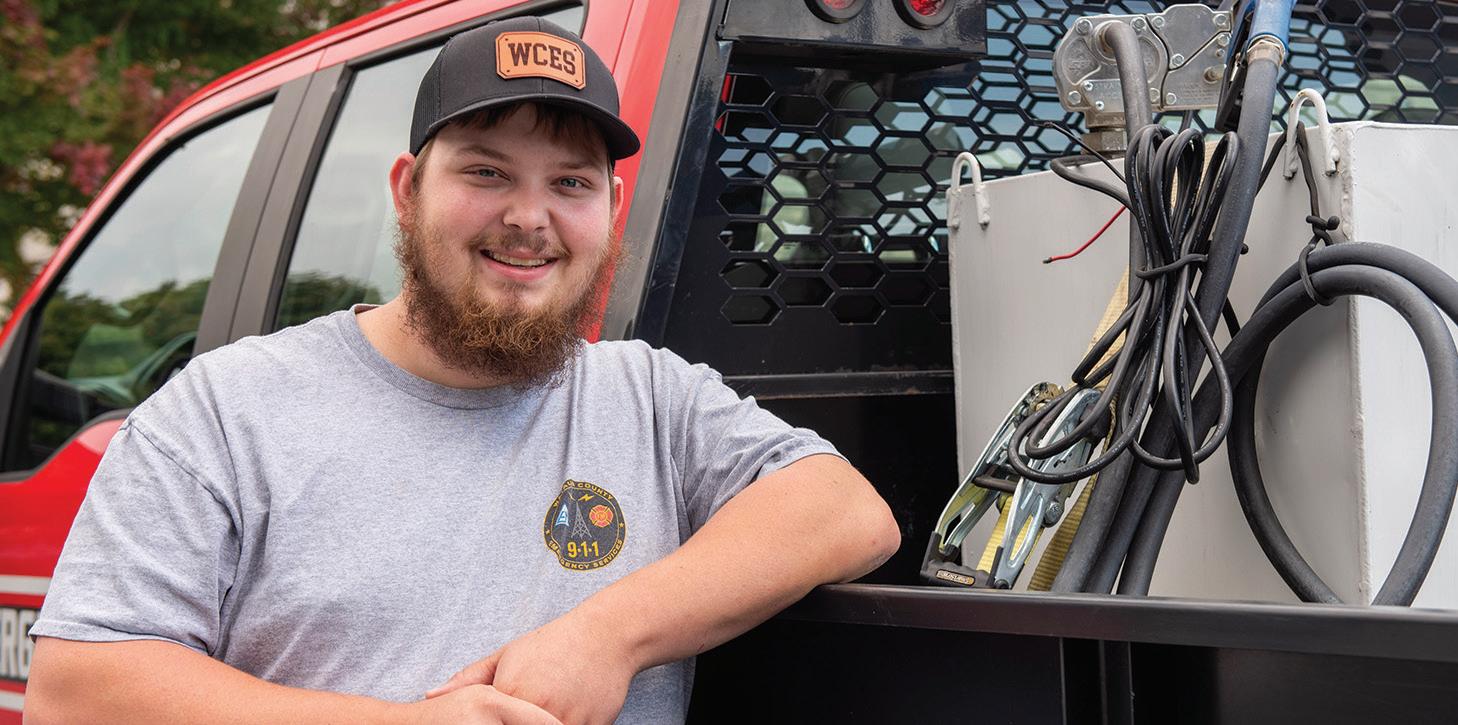

“You can have all the planning that you want, but until you have that many hands and feet, it doesn’t get you very far,” she said.
Tom Beam, the disaster relief coordinator for Baptists on Mission and an App State alum, was one of these community partners. Baptists on Mission is comprised of churches all across North Carolina who aid in disaster response.
During the weeks following Helene, Beam’s efforts were focused on tasks such as allocating resources and removing debris.
“We could not do what we do in Watauga County — in Boone — without students from Appalachian volunteering and helping get those meals on those vehicles to get them delivered,” he said.
According to University Communications, App State received “an average of 16+ inches of rainfall from Helene.” App State’s Emergency Operations Center processed over 110 requests for support following the aftermath of the storm.
Jason Marshburn, director of Environmental Health, Safety and Emergency Management at App
State, said the university readily organizes procedures in the event of an emergency. He said routine exercises are held with partners across campus and the local community to prepare for disasters.
Beyond these exercises, Marshburn said App State meets at least quarterly with public safety partners to talk through plans and potential challenges.
“We already had this regular cadence and these relationships built going into Helene,” he said.
Additionally, Marshburn said App State conducts regular training, engages in pre-emergency planning and ensures each department has access to the resources it needs.
Chancellor Communications Director Megan Hayes said the university follows a standard, continuous process for assessing safety, which is a main priority in the event of an emergency and involves the coordination of many people.
“Once a month, there’s a group of people who communicate for those different agencies that get together in times when things aren’t bad, so that when things are bad, we know who to talk to,” she said.
The relationship between Watauga County and App State played a key role in the execution of emergency procedures. Hayes said when the chancellor and her leadership team received a call from the county that the designated area for the Red Cross was flooded, App State’s emergency team implemented plans to open access to the arena of the Holmes Convocation Center.
“It’s a combination of responding in the moment and trying to keep your eye on the big picture, too,” she said.
had a “real and meaningful heart-tug attraction” for the community wanted to contribute.
“We have seen partners come together for the betterment of our community that sometimes don’t always agree or sometimes are a little bit distanced from one another from a community organizing standpoint,” he said. “And those people are singing off the same sheet music right now, and we need to keep that moving because we’re not done yet.”
For a period of time during Helene, App State suffered a “complete loss of all communication systems,” including both primary and backup systems, Marshburn said. Since then, App State has focused on further enhancing these communication systems, since emergencies, like Helene, allow for an opportunity to improve response efforts, he said.
David Jackson, CEO of the Boone Area Chamber of Commerce, said the chamber had an “extremely high level” of involvement in regard to the emergency response. Presently, the chamber is offering grant funding to local businesses to help them get back on their feet.
Jackson said many people who


Haley DiFruscio | Political Editor
For over 75 years, the Boone Area Chamber of Commerce has acted as an advisor, distributor of information, community organizer and advocate for businesses in Boone.
“They’ve really made themselves kind of indispensable to the local community,” said Seth Sullivan, coowner of The Cardinal. “I feel like the Boone chamber has a really strong cachet in the community.”
Boone businesses can become members of the chamber and receive various benefits, including discounts, useful information about business grants or loans, networking opportunities and a seat at the table for important community conversations, said the chamber’s president and CEO, David Jackson.
The chamber is not a government organization and receives all its revenue from member dues, advertising, sponsorships and donations. However, it does work closely with the local government. Jackson said it has developed itself into a true business advocacy organization over the years.
“We are listening to the needs of business and trying to either connect
people with the answer that they need or bring attention to specific things that are beneficial for the business community and quality of life in general,” he said.
The chamber advocates for community development, accessible housing and child care, proper working conditions and transportation.
Child care was a focus for the chamber this year and was highlighted at Spirit of Boone, their 76th annual membership gathering. Spirit of Boone is “chamber prom in a way,” Jackson said Spirit of Boone is “chamber prom in a way” and celebrates what the group and its members have accomplished.”
Talia Freeman, director of marketing at Beech Mountain Resort and one of the chamber’s community award recipients, spoke on the issue of child care at Spirit of Boone.
“It’s normal for our staff to leave for school pickup or have a child at work,” Freeman said. “That’s part of supporting your team, but it also just shows how much child care shapes hiring and also retention.”
Freeman said the Boone Area Chamber of Commerce Foundation has committed funds to various
endeavors, such as giving $200,000 to cover child care tuition in local centers.
Samantha Cole, the child care business liaison for the North Carolina Department of Commerce, highlighted the chamber’s emphasis on child care after Hurricane Helene.
“This organization understood that child care access is going to be critical to helping small businesses reopen, to helping people get back to work, to helping families fully recover,” Cole said.
When it came to Helene recovery, Jackson said there was little the chamber wasn’t doing. They facilitated communication both in and out of the community to get resources where they needed to be. Jackson said they were deputized by Watauga County to run a resource shelter out of The Summit Pickleball’s facility.
“We also were an early conduit for resource providers, so we helped get SBA and FEMA here,” Jackson said. “None of them can deploy until they have accommodation, so we were arranging hotel rooms for FEMA staff and SBA staff.”
Through their foundation, the
chamber was able to distribute grants to businesses affected by Helene. Lily’s Snack Bar was a recipient of a grant, said owner Trevor Moody, and the money went toward their rent.
“It’s not enough to cover a lot of things, or almost anything in the world of businesses, but every little bit adds up,” Moody said.
Jackson said the other biggest draw of the chamber is the networking opportunities, which is what drove Emily Roberts, co-owner of The Pottery Lot, to join. Roberts said she was hoping to learn about Boone from other business owners.
One way the chamber supports new businesses is ribbon cuttings, which are organized by the chamber’s staff. Although The Pottery Lot’s had to be rescheduled, Roberts said a lot of people still showed up in support.
“I mean, they were so supportive that a lot of them don’t usually go to all the ribbon cuttings and they came to ours. They brought some of their kids that are the same age as our child,” Roberts said.
In addition to co-owning The Cardinal, Sullivan is the board chair elect for the chamber’s executive committee. He said he took on the role for the same reason The Cardinal first joined the chamber — community.
“They’ve really made themselves kind of indispensable to the local community”
- Seth Sullivan, co-owner of The Cardinal
“It’s a different market, you know. You’ve got a mix of tourism, the college, the regular locals,” Roberts said. “I would say, other places, you probably just have your local community, but this is a little bit different.”
“The chamber is our community, you know; it’s our way to join with our fellow businesses and advocate for each other and also support each other,” Sullivan said. “So that’s why I do this every week.”

Ashton Ahart | Senior News Reporter
If one walks around App State on a sunny day, often various dogs, or maybe even a cat, can be found around campus. These pets are a staple of Sanford Mall and therapy offices, and they can provide a refreshing break from the stress of schoolwork.


What most people don’t look for, however, are the animals behind glass walls with fins, scales and exoskeletons instead of whiskers and fur.
Inside Crossroads is a fish tank that has been around for several years. The tank contains various saltwater fish that watch college students, professors and locals alike wait in line to order.
These fish are taken care of by Noah Derucher, a junior political science major and self-proclaimed fish enthusiast.
“I’ve always wanted a fish tank,” Derucher said. “Instead of taking care of a small tank myself in my apartment, I set up a large saltwater tank here.”
Derucher said he took over the position as fish caretaker in February, when the tank was a freshwater enclosure in rough condition.
“Running a saltwater tank has been easier than trying to save that freshwater tank. It was easier to start over,” Derucher said.
The old fish found new homes during this process, and the new fish were paid for in part by the university.
App State also pays for the equipment, sand and rocks, while Derucher bought the decorations.
“It’s not as easy as it looks,” Derucher said. “It’s a process and a patience game.”
The fish’s care routine involves being fed three times a day, having a dose of vitamins and phytoplanktons given to them three times a week and weekly tank cleanings. The upkeep is continuous, and Derucher takes care of the fish alongside his class schedule.
Along with recreational pets like those living in the Crossroads fish tank, App State houses animal enclosures to provide learning opportunities for students.
Within Rankin Hall live Rosie and Violet, two snakes that have years of history at App State.
Scott Rhyne, the vivarium research director, is the caretaker of the snakes and started his career at a veterinary hospital. He’s been looking after the two snakes since his undergraduate years and handles them when needed.
Unlike Derucher’s fish, these animals are strictly considered learning materials to be used in a zoology lab once a semester, Rhyne said. They get taken out of their enclosure to be studied and observed by students in a showcase of various other animals that one would otherwise not interact with.
“The real world experience of a real animal in front of you is such a different thing than looking at something in a book or on a screen. You can’t make up for that experience of actually holding or seeing it move or feeling it move,” Rhyne said.
When the snakes aren’t being used in class, they laze around their enclosure.
They receive daily welfare checkups and have a feeding log that is upheld by their caretakers. They also have a campus veterinarian who is available to them in case they need it.
Also in the Department of Biology are more creatures from other countries and continents, like
Madagascar hissing cockroaches.
These critters are looked after by Todd Jackson, a teaching assistant professor. He’s been studying insects since his graduate school years and currently oversees the entomology lab, where the bugs are used as a “showand-tell” display, Jackson said.
He has given various offspring of the roaches to programs like local Boy Scout troops and early-childhood development teachers.
“It’s a great thing to try to be a spokesperson for a misunderstood group,” Jackson said.
The goal of sharing the bugs is to get people “to not be afraid of them, not be grossed out by them but to have seen them, held them, touch them, have them hiss at them,” Jackson said.
The roaches originally belonged to the Reich College of Education, which was previously using them for a display.It then gave the roaches to Jackson, due to his experience and because he was teaching the entomology lab.
He uses the roaches as a way to relate the class to realworld insect studies and to convince people to not fear insects.
“They’re hissing, six-legged ambassadors,” Jackson said.
Jackson described their care process as “benign neglect,” meaning they do not need to be constantly looked after to thrive. They are fed an omnivorous diet of vegetable and fruit pieces, dried cat food and their favorite, dandelion grass. They drink from a water-soaked sponge since a regular bowl of water would cause them to drown.
“There’s lots out there that 99% of people walking around walk right past, look right at and never see,” Jackson said. “The world around us, the forest and trees, are kind of like a painting, a two dimensional backdrop. But once you start to see what’s alive in there, it becomes 3D.”
Rainbow Kitten Surprise performing live shortly after the release of their second album, “RKS,” at Murphy’s Restaurant and Pub in August 2015. Courtesy of Halli Carden

campus sensation that propelled five individuals to sign multiple record deals.
Rainbow Kitten Surprise returns to App State Oct. 17 for a hometown show in the Holmes Convocation Center.
The alternative-pop group got their start in Boone 12 years ago when members Ela Melo and Darrick “Bozzy” Keller met in Bowie Residence Hall. After recording their first EP, titled “Mary,” the two joined forces with three other bandmates to write the album “Seven.” These two projects were combined into the band’s first studio album, titled “Seven + Mary.”
On Jan. 30, 2015, RKS signed their first record deal with App State’s student-run record label, Split Rail Records. This allowed the group to professionally record, produce and release their self-titled album, “RKS,” on April 25, 2015.
Kim Wangler, the previous director of the music industry studies program, wrote in an email about how RKS got started with Split Rail.
“The students in the company had complete control of choosing an artist, and so someone brought them for consideration and all agreed they had great potential,” Wangler wrote.
Rachel Mullins, the former president of Split Rail, interviewed with The Appalachian in 2015, pointing out some unique factors RKS showcased.
“We haven’t worked with this style of music or this size of a group in a while, and we feel that RKS has a lot of talent and potential that we’d like to help them develop and showcase,” Mullins said in the interview.
This conglomerate of students put RKS in a recording studio for the first time, providing the musicians and students with hands-on industry experience.
“Of course we are super proud to have been connected with them, and we think we created a great first studio album for them,” Wangler wrote.
“I think everyone grew and learned through the studio experience - there were ups and downs getting all the tracks recorded… and we all learned.”
RKS is not the only successful musical act to come out of the High Country, standing alongside country artists Luke Combs and Eric Church as App State’s “claim to fame.”
Through the joint efforts of Split Rail and music industry students from the Hayes School of Music, RKS was able to carry their success beyond Boone’s bar scene.
In 2017, the band signed with Elektra Records, a subsidiary of Warner Music Group. This followed a successful run of performances at popular festivals, such as Bonnaroo and Austin City Limits.
The band’s first release with Elektra, “How to: Friend, Love, Freefall,” would go on to be certified Gold by the Recording Industry Association of America.
Additionally, this album cycle saw the band’s last show in Boone. In 2018, RKS took the stage at the now demolished campus venue, Legends. Ahead of their performance, the band interviewed with The Appalachian to discuss the hometown show which kicked off their “Friend, Love, Freefall” tour.
“For us, we wanted to make sure our hometown knew that we hadn’t forgotten about them,” Melo said in the interview. “After traveling all over the country, it was time to return to our roots and come back home.”

Thais Zboichyk | A&C Reporter
Every fall, thousands of tourists flock to the Appalachian Mountains to witness the trees changing colors. Thousands more fly to Germany for a taste of its vibrant beer culture. Boone’s Oktoberfest offers the best of both.
Alyssa Hasty, the marketing coordinator for Lost Province Brewing Co., helped plan the brewery’s Oktoberfest celebration.
“Boonetoberfest is definitely our biggest event of the year,” Hasty said. “It truly takes a village to pull it off. Coordination with musicians, vendors, local organizations and our in-house teams is key.”
Across downtown Boone, local businesses Lost Province, SouthEnd Brewing Co., FizzEd and 828 Real Estate banded together to create a large Oktoberfest celebration, dubbed Boonetoberfest, on Sept. 20.
“SouthEnd is hosting their own Oktoberfest, and other downtown businesses, like FizzEd and 828 Real Estate, are hosting Bavarian-themed activities,” Hasty said. “We booked the Abby Bryant band to kick off our festivities and will be hosting various buskers throughout the day. This is also our first year having vendors.”
To ensure entertainment for all attendees, Lost Province partnered with the Children’s Playhouse and Watauga County Public Library to
provide activities for underage guests.
Boonetoberfest also collaborated with the Watauga Arts Council to coincide with Buskers Fest, an arts festival that celebrates local artists and performers.
“We definitely try to have a local-focused vibe at Lost Province, especially when we book musicians,” Hasty said. “The culture we have right here in Appalachia is unlike any other, and we do our best to highlight Appalachian-based artists.”
Outside of Boonetoberfest, several breweries hosted individual Oktoberfest events. Appalachian Mountain Brewery, owned by cousins Chris Zieber and Nathan Kelischek, hosted its fifth annual Oktoberfest on Sept. 20.
Zieber said Oktoberfest’s roots lie in a wedding celebration between the Duke of Bavaria and his wife, Therese, in 1800s Germany. Since then, the holiday has evolved into a festival filled with food and games, but is ultimately known for its beer.
“We have a lot of German heritage; we have some family over there, so we’re trying to bring a little taste of that here to the High Country,” Zieber said.
Aside from traditional Oktoberfest fare, including two specialty beers, a special menu and steinholding competitions, AMB gave visitors fun
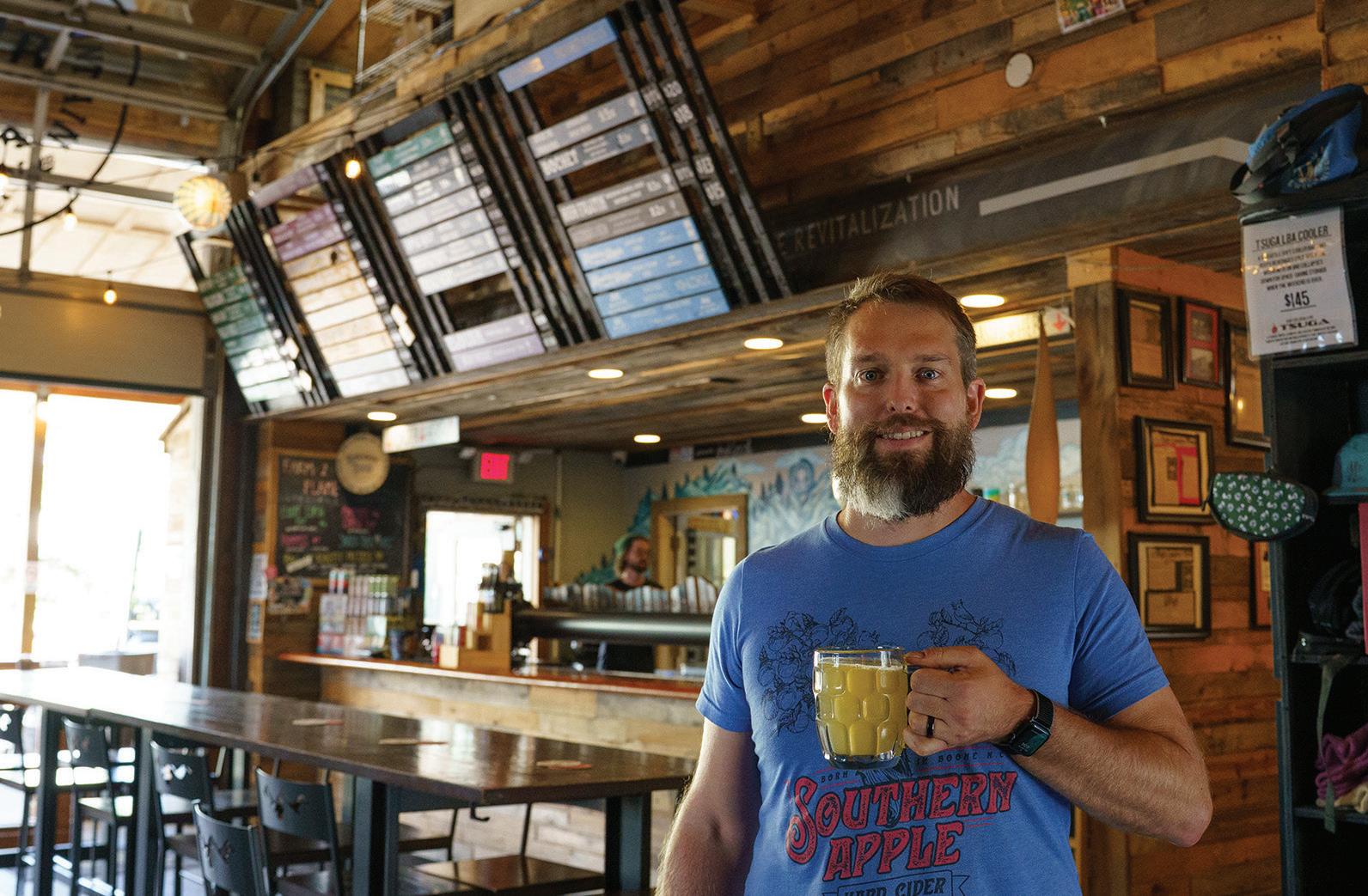
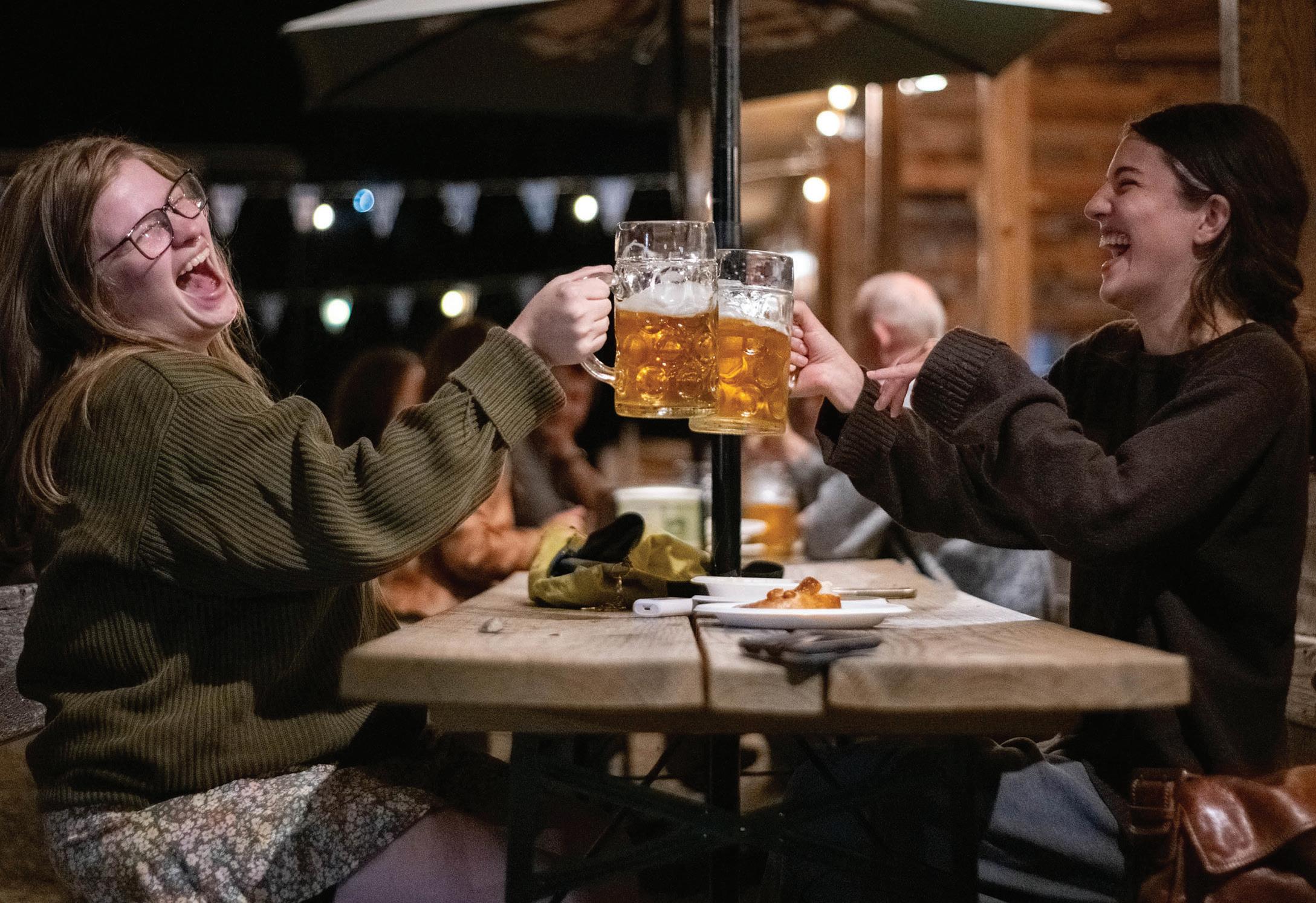
opportunities to benefit the local community.
“One of the things we do is partner with nonprofits. We give tickets at the door, and those tickets go towards the games that these nonprofits bring,” Zieber said. “You play the game, you get to meet the people that are doing important work in our community, and they get a little money from it. It’s a fun way to give back and keep that Oktoberfest tradition alive.”
Last year, breweries experienced difficulties with Oktoberfest celebrations following the devastation Hurricane Helene caused for local businesses. Some breweries, including AMB, were able to plan and execute Oktoberfest before the hurricane struck. Others were not as lucky.
“Last year was slated to boast
the biggest downtown Oktoberfest celebration yet,” Hasty said.
“Unfortunately, Hurricane Helene hit a week before we had scheduled the festivities, and we ultimately decided to cancel the areawide celebrations.”
With the one-year anniversary of Helene haunting the fall season, local businesses continue to strengthen the bonds of community. This year, providing support for struggling neighbors has taken the forefront of Oktoberfest celebrations in Boone.
“There are a lot of communities that are still struggling, so part of our conversations with nonprofits have been about the work they’ve done and contributing to restoration and conservation,” Zieber said. “We’re all here, on the same team, trying to help each other through difficult times.”
While Oktoberfest celebrations
continue to be filled with food, games, beer and fun, it also serves as a way to help strengthen the community within Boone.
“We believe that the root of craft beer is community,” Hasty said. “Oktoberfest is a pretty good way to bring folks together over some brews.”
Beatrix Johnson | A&C Reporter
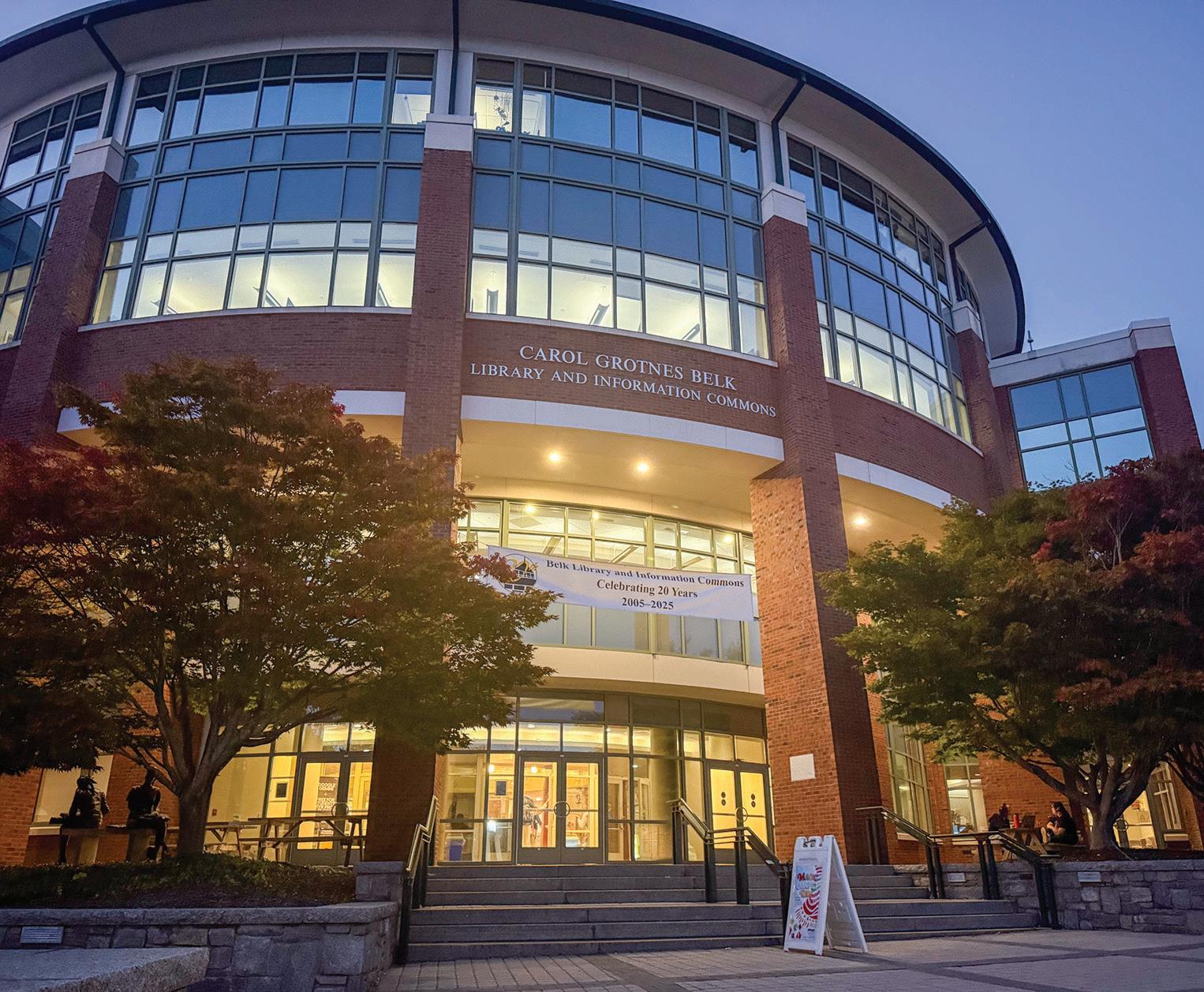


Rows of books line the shelves of Belk Library and Information Commons— some old, some new, all filled to the brim with knowledge. Wide-eyed freshmen can be seen running their fingers across the books for the first time while seasoned seniors weave their way through the rows to their long-claimed study corners.
In an age where artificial intelligence platforms, like ChatGPT and Google Gemini, aid people with their everyday questions, libraries can be overlooked. Yet, with approximately 21% of United States adults considered illiterate in 2024 according to the National Literacy Institute, libraries have never been more essential.
On June 20, Belk Library celebrated two decades in its current building. Previously, it was located in Anne Belk Hall, which was designed to house roughly 400,000 books. Since moving locations, it has expanded far beyond the original capacity. According to Sue Polanka, dean of University Libraries, it currently holds 600,000 print volumes in its permanent collection, as well as 2,258,000 electronic books, or e-books.
20 years ago, these two million e-books were not a part of Belk’s collection. A 2023 study from Harvard Graduate School of Education declared e-books can be used as a tool to help children improve reading within early childhood development. For $10 a year, community members can purchase a library card and utilize both physical resources and e-books,
We are much more than a book repository. We have really vibrant services that are growing and changing according to the needs.
-
providing a chance to promote childhood education and literacy outside of the classroom. Community members can also peruse the shelves of Watauga County Public Library for free year-round.
Monica Caruso has been working at the Watauga Library, where she serves as a county librarian, for the last 16 years.
“We have something for everybody, at every age and every stage of their life,” Caruso said.
Watauga Library hosts a wide array of events, including book clubs catered to older audiences and a monthly LEGO club for kids to enjoy. In the last few weeks, it has started up a Girls Who Code group, where despite the title, children of all genders are encouraged to learn skills in coding and digital literacy. Three times a week, the library hosts a storytime celebrating children’s literature, literature that is catered toward preschool children.
According to The Nation’s Report Card released in January, literacy rates in the U.S. have declined by two points for both fourth- and eighth-grade students compared to 2022.
read,” Caruso said. “So it’s like you’re encouraged to read for, like 20, minutes a day and then weekly you come back with your little log and then check it off. We record our information on our end and give you prizes.”

than managing books. It also has a fundamental role in helping people. Raised by an educator, this commitment to helping others is what led Caruso to pursue her career 29 years ago.
“I think a lot of it is responding to community needs,” Caruso said.
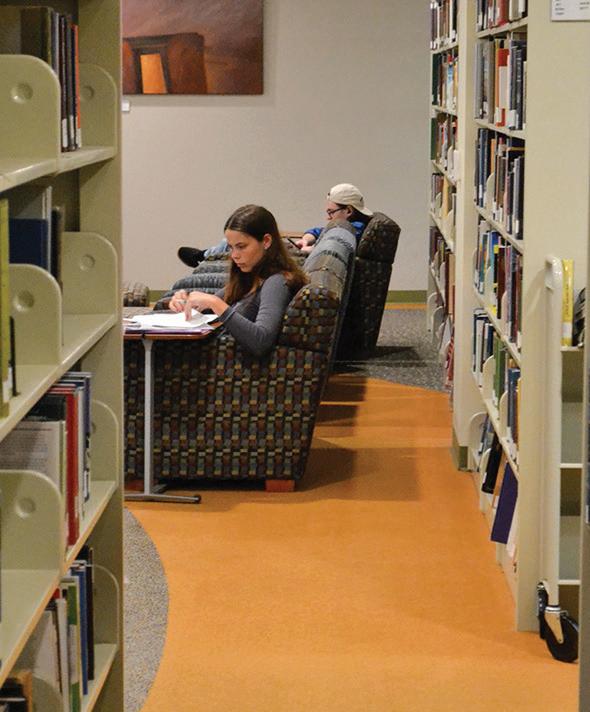
In response, libraries have stepped in to fill this gap, providing services to strengthen literacy and encourage reading outside of the classroom.
Over the past summer, the library’s youth-oriented reading program flourished.
“We also track the minutes
Caruso said there was a total of 6,500 hours of reading recorded, a 50% increase from the previous year. Nearly 700 kids participated in the “Color Our World” themed summer reading program and many gathered in a conclusive celebration with excitement, face painting and ice cream on Aug. 1.
For librarians like Caruso, the job proves to be about much more
When Hurricane Helene hit the High Country, it only took a few days for the Watauga Library to open its doors to the public. People used it as a safe space after the storm, gathering to access the free and always available Wi-Fi and feel the warmth of the strong, supportive environment. Similarly, Belk Library opened its doors to the public for one week post-Helene, offering shelter, power, free internet access, printing services and clean water to anyone who needed it.
Other than its welcoming response to disaster and its extensive collection of books, Belk Library has many other services to offer within its walls.
“We are much more than a book repository,” Polanka said. “We have really vibrant services that are growing and changing according to the needs.”
Opened in the fall of 2022, the lower level of Belk Library houses the Makerspace, a design lab featuring a variety of tools for all things creative. Sewing machines, craft materials and 3D printers are some of the crafting tools the space provides. All students
can use this space, whether for class projects or outside interests.
On the fourth floor, the special collections archive highlights some of the one-of-a-kind novels Belk Library holds. Polanka said, in the archive, nestled between two rocking chairs, students can access oral history collections, which hold nearly 40 years of Merlefest recordings. Students can also access interviews with prominent artists, such as Sam Bush, in special collections.
Polanka encourages students to utilize these services both within their education, as well as in developing life skills to aid with their future careers.
“I am a students-first librarian,” Polanka said. “I make my decisions based on what I feel is best for the students.”


Alex Wallin | Associate A&C Editor
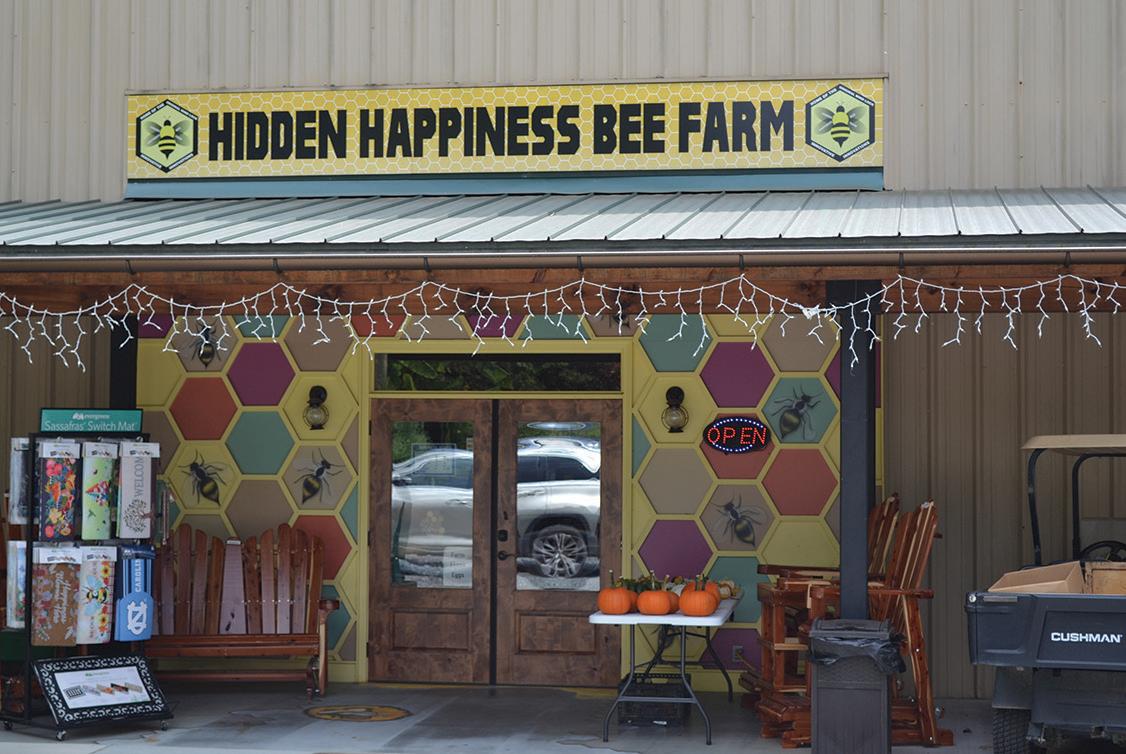
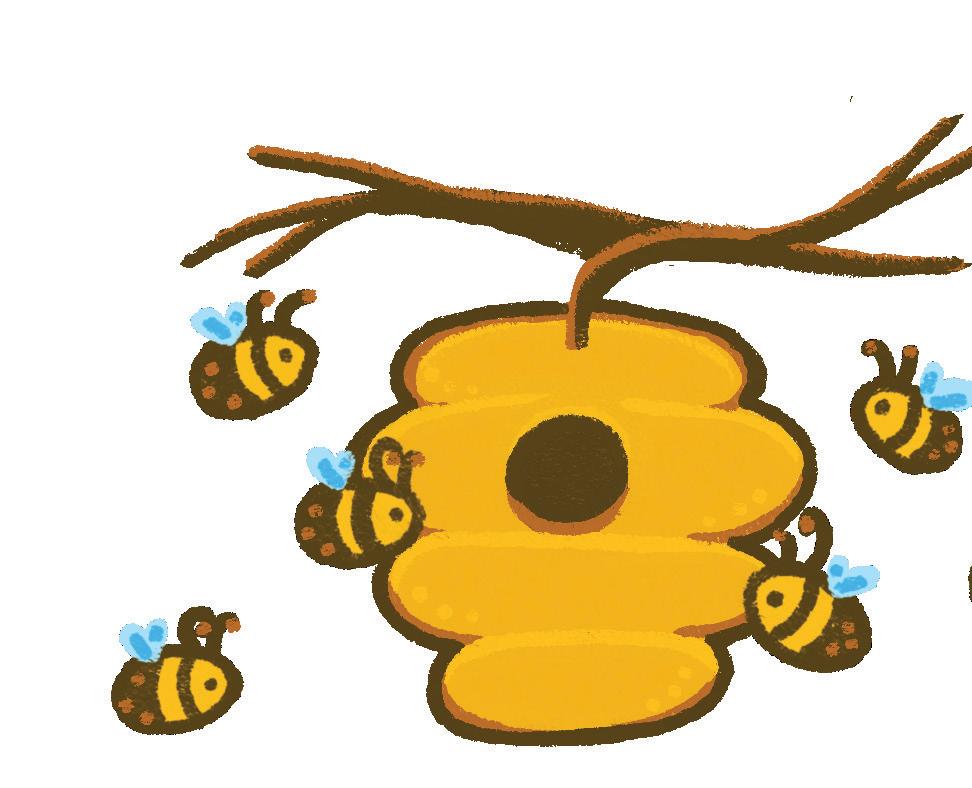
a camera pointing to the entrance. This type of research is crucial to understanding the pollinators that human society relies on, especially through natural disasters like Hurricane Helene.
“In North Carolina, we have about 140,000 hives; last year, we lost about 60% of them,” Tashakkori said. “That affects one-third of food, and I think a lot of people don’t know any of this. In reality, they don’t know how crucial bees are.”
Jennifer Geib, an associate professor and assistant chair for student affairs in the biology department, conducts research on pollinators.
Geib said bumblebees are also important pollinators in the community, but they are often overlooked in comparison to honeybees.
“Bumblebees, in general, for the ecosystem, are kind of the most efficient, most effective partner for a lot of different plant species in most communities,” Geib said. “So you really need the whole community for everybody to get what they need.”
Tashakkori said researchers are trying to find ways to aid bees, although most options are not sustainable.
The gentle whir of honeybees soothes the High Country’s crisp mountain air as pollinators work to maintain their delicately crafted hives at Hidden Happiness Bee Farm.
The sixth annual High Country Bee Fest takes place Oct. 11 at Hidden Happiness Bee Farm from 9 a.m. to 4 p.m. Local vendors, live music, hayrides, food and honey will be offered in celebration of these winged insects.
H.S. Greene, the owner and beekeeper of the farm, said the festival exists to educate the public on bees and serve the local community.
“The community needs support itself, and I help support a lot of local artisans,” Greene said. “If they have no avenue to get rid of their products or sell their products, this is the way to help them. We need to make the community strong.”
Greene said the festival hosts about 40 local vendors. Each one provides a creative product like jewelry, soap, pottery or plants to sell to the estimated 1,200 attendees the owner is expecting.
The event will feature an educational booth run by the High Country Bee Keepers, a club of which Greene is a member. They meet at the Hidden Happiness Bee Farm once a month to learn how to take care of bees.
“My ultimate goal is to educate the public on the importance of a honeybee, and then let the community know, and the surrounding counties, that they can get their supplies here and be educated to be a successful beekeeper,” Greene said.
The beekeeper said he was inspired to create the festival after one of the two local stores for bee supplies went bankrupt.
“If you can drive within 30 minutes to get bee supplies, be able to take a class and learn how to manage the bees, you’re pretty fortunate,” Greene said.
Rahman Tashakkori, a computer science professor, is the director of an interdisciplinary project focused on bees called AppMAIS, which stands for Appalachian Multipurpose Apiary Informatics Systems.
“The AppMAIS project was born four years ago through a grant from the General Assembly,” Tashakkori said. “The idea was that we collect data from hives, which includes humidity, temperature, audio from inside the hive, video at the entrance of the hive, the weight of the hive and also genetic samples from the hives.”
Tashakkori said the group observes this data through computerized bee hives, which consist of a computer attached to a hive equipped with
Geib said as climate change occurs and habitats start to become inhospitable, plants can deal with the changing environment through the seeds they produce. Bees move the seeds through pollination and, in turn, create new populations in different environments, which is one reason why they are such crucial creatures.
“The number one killer of honeybees are varroa mites and then, of course, the pesticides,” Tashakkori said.
Tashakkori said the lack of resources and varying humidity can cause problems for the pollinators as
“If we don’t have them, in general, we’re doomed. That’s why a lot of people now are looking at some robotic options, which is not as efficient, but something,” Tashakkori said.
Tashakkori said limiting pesticide use, mowing the lawn every other week and leaving weeds alone are simple changes that can have an immensely positive impact on the bee population.
“We need young people to get involved because without you guys, nothing will change,” Tashakkori said.




Come write for The Appalachian!
The Appalachian’s opinion desk publishes opinion pieces, columns, guest articles and letters to the editor.
• Craft persuasive arguments about your hottest take.
• Voice your unique perspective through personal experience in a column.
• All levels of student journalism experience welcome. All majors encouraged to join!




Parker Egeland | Reporter
App State’s athletics program features numerous international athletes who, despite hailing from different countries, made the trek to the High Country.
From Winterthur, Switzerland, redshirt freshman forward
Andrin Njock considers sports his greatest love. He played soccer until he was 12 years old, and later, when he felt that his 6-foot-6-inch frame was too tall for the sport, he made the switch to the hardwood court. Njock noticed how different the popularity of basketball is in the United States compared to Switzerland.
“In Switzerland, it’s really soccer that is the biggest sport. Here, there’s way more culture, way more facilities, way more budget. Everything’s just bigger here than in Switzerland,” Njock said.
Having missed the 2024-25 season with an injury and taking a redshirt year, Njock said he is disappointed knowing he missed his first potential season of college basketball. However, he believes that seeing how the game works in the U.S. could benefit him this season.
Njock got to showcase his talents in the 2025 U19 Basketball World Cup, which Switzerland hosted. Playing against some of the highestranked prospects in the world, such as AJ Dybantsa, Njock held his own, averaging 11.7 points and 4.1 rebounds per game.
“I’ve never seen so many people love the game of basketball,” Njock said. “Before I came here, I would play in small gyms, and it would just be your family watching.”

“Then, just speaking to the coach, hearing what she has to say about the team, speaking to some players and their experience on the team and in Boone and then just making my decision from there.”
This past spring, Manyube was named to the second team allconference after finishing 14-2 in singles and also named Sun Belt player of the week on March 19 after picking up wins against No. 48 South Alabama and Southern Miss.
The Mountaineer tennis team had a historic 2024-25 season with a program-best of 17 victories. Manyube hopes to build off of this success with an even stronger 2025-26 campaign.
“We know what we’re capable of and using what we did last season as confidence,” Manyube said. “Looking back and saying ‘we can achieve more,’ and just keep getting back to the tennis court and working harder.”
With a new college basketball season starting on Nov. 3, Njock is ready to finally get on the court with his teammates.




Junior Naledi Manyube got her start in sports when she was just 7 years old in George, South Africa. Despite being interested in many sports, tennis was always the one that stuck out to her.
Every inhabited continent in the world is represented on the App State tennis team, and Manyube enjoys learning about different backgrounds and cultures.
Williams always wanted to come to the U.S. for college. The beauty of App State’s campus caught her eye, as well as the culture of the soccer program, and she knew it was the place for her.
Though the rules are the same, many sports are played differently in Europe and the U.S., and soccer is no different. Williams noticed the contrast early in her time in the High Country.
“The speed of the game is much quicker,” Williams said. “Here, you always have to be ready and be on your toes.”
Williams is a freshman but leads the soccer team in minutes played, and in her short career, she has already been a part of some memorable moments for the Mountaineers. On Aug. 17, in her first home game, the Black and Gold got their first win over a power conference team since 2016 when they defeated Miami 1-0.
The soccer season is almost over, but Williams wants to keep pushing for the rest of the year.
“Just keep playing, keep enjoying it, keep starting and win games,” Williams said.

“It’s a really cool opportunity to learn people’s perspectives. Even when I’m speaking with some of the girls, we’re just talking about how we grew up and how we come from different and diverse backgrounds,” Manyube said.
Freshman forward Maddie Williams is from Birmingham, England and got into sports through her dad. With soccer being such a popular sport in England, it was always the game for her.
Boone felt right at home for Manyube, especially because of the close-knit environment.
“From everyone I’ve spoken to, they said the community was really good; everyone is really nice,” Manyube said.
Training in the Aston Villa Academy taught her about the game and helped her grow into the athlete she is today.
“The Villa academy was good. It taught me a lot of things technical-wise and tactically as I grew up,” Williams said.





Trey Blake | Reporter
It’s a crisp, fall morning as App State field hockey takes the field at Brandon & Erica M. Adcock Field Hockey Complex. Senior midfielder Lise Boekaar fires shots into the top left corner that onlookers can hear hit the net. What they also hear from the sidelines is the praise she gets from head coach Emily Dinsmore on her growth as a competitor.
“Once she gets on the field, she’s locked in. I kind of relate it to Michael Jordan the way she leads by example,” Dinsmore said. “She’s intense in her play, and she wants to win, and the team sees that.”
A berth in the Mid-American Conference championship game in 2022 and a first team All-MAC selection in 2023 and 2024 is in the back of her mind, but so is a NCAA tournament appearance. In her own words: “It’s the ultimate goal.” Boekaar landed in the United States in 2022 from Groningen, a city on the northern coast of the Netherlands. A six-hour time difference separates her and her family, but she said she made a new family the second she stepped into the High Country.
“I felt at home very quickly. I was shy in the beginning and a bit nervous, but the team, and especially my class, was so nice and welcoming, which made it a very easy transition,” Boekaar said. “I love the sports culture they have here and being in the mountains, but I feel most at home in the Netherlands, where the land is flat, and I can bike everywhere.”
In her first season, Boekaar started 17 of 20 games while scoring 3 goals on 6 shots, which led the team at 50%. She also was second on the team in shots on goal percentage at 83%.
Her first year on the team saw some firsts for the program as well. A first-ever MAC championship game appearance came as she played meaningful minutes, 45 per game out of a possible 60 during the best 10-game stretch of the Mountaineers’ season. At the end of her season, she was named to the All-MAC second team.
A disappointing 3-1 loss to Miami University of Ohio ended App State’s season that year in the MAC Championship game, a surprising run after not making the MAC tournament in the previous year.
But to Boekaar, disappointment isn’t failure, it’s redirection.
“Even from day one, you could tell that Lise is a competitor,” Dinsmore said. “Each and every year she has grown and gained more confidence. It’s always a transition and trying to find your place, but she’s become more comfortable.”
Boekaar’s sophomore year was the first under Dinsmore. Lise became a star in the midfield in the new coaches’ system, notching career highs in every category the school tracks and getting selected to her first All-MAC team. Boekaar was also a key part in App State finishing the year on a 9-game win streak, which included a shocking defeat of the No. 8 Louisville Cardinals at their own stadium on their Senior Day.
The game against Louisville solidified App State and Boekaar as a force to be reckoned with. After that game, teams began double and even triple teaming her.
A loss to an 8-10 Kent State in the first game of the MAC tournament ended what seemed to be a dream season for the Black and Gold. But Boekaar did what she always does — she looked forward.
Last season kept the same flow for

Boekaar. She was named first team All-MAC for the second straight year while scoring 3 goals and dishing out 7 assists. The accolades didn’t stop; winning the first-ever MAC regular season title for App State only cemented the team’s and Lise’s place in the history books. But another defeat at the hands of Miami (OH) in overtime ended the Mountaineers’ season.
While Boekaar and App State have seen three straight years of history, they have also seen heartbreak and defeat. However, Boekaar doesn’t give into it, and she said she continues to practice and improve because of her teammates and her drive for her goals.
“For me, the team is what gives me the most energy and pushes me to get better everyday,” Boekaar said. “I’m almost always excited for practice, but even on the days I’m not, once we arrive at the field and see my teammates, I can’t wait to practice.”
Lise has put the field hockey world on notice to start the year. Through 7 games, she has a staggering 8 goals and 14 assists. Her 8 goals lists her second in the MAC right now but 14 assists doubles up second place in the conference and is the most any App
State player has had in a season since 2016.
Boekaar’s staggering assist total has catapulted her into being the all-time leader in assists for App State. She achieved the record with 3 assists in a 5-3 victory over conference foe Ohio University.
The strong start to the season has Mountaineer fans excited for the rest of the year, but Boekaar is also looking forward to graduation this May and spending time back in her home country.
“I’m definitely going to party with my class, celebrating finishing our studies here,” Boekaar said. “Hopefully, I will be able to travel and see a bit more of America before I’m going back home to the Netherlands. I’m planning to do my masters at home while still playing field hockey. I always loved Amsterdam and would like to do my masters there, especially since my sister just moved there for university as well.”
Tess McNally | Associate Sports Editor

It was a bone-chilling 18 degrees outside with snow on the ground and a freezing wind in the air. App State’s special teams coordinator, Jeff Crosby, made the long trip to NorthWood High School in Nappanee, Indiana.
“He went 14 of 15 field goals, and I knew right then, he was the guy,” Crosby said.
Freshman kicker Dominic De Freitas was the player of interest.
“I love it here; it’s definitely a new experience,” De Freitas said. “A lot to get used to.”
Crosby held an influential role in De Freitas packing up to move 10 hours away from home.
“Crosby and I had such a good relationship off the start that wherever he was gonna be, I wanted to be with him and have him as my coach,” De Freitas said.
De Freitas started his high school career playing soccer.
“We would have to keep an eye on him because he wanted to win so badly; he was very physical,” said AJ Risedorph, De Freitas’ athletic director at NorthWood.
De Freitas was later recruited by NorthWood as a kicker.
“It took a couple years for our coach at the high school to warm up to kicking field goals because our coach is historically known for saying ‘two is worth more than one,’” Risedorph said.
De Freitas broke the record for the longest field goal on the football team with a 62-yard kick, which is also the record for the state of Indiana.
“He spent so many invisible hours coming out on campus,” Risedorph said. “If there was green grass and uprights available, he was kicking field goals.”
De Freitas is adjusting to not only the atmosphere of App State but the terrain as well.
The first game of the season led the Mountaineers to Bank of America Stadium in Charlotte, home of the Carolina Panthers, where De Freitas began his collegiate career.
“I was hoping we would get a short field goal inside the 20, and I think his first one was 47 yards, but I had all the confidence in the world sending him out there,” Crosby said.
As De Freitas watched his first college kick go through the goal posts, he knew he deserved his place on the team.
“It was a celebration; I’ve never got hit in the helmet so much,” De Freitas said. “I felt like a bobblehead.”

After returning to Kidd Brewer Stadium for their matchup against Lindenwood University the following week, De Freitas made both of his field goal attempts and put points on the scoreboard for the Mountaineers.
When the Black and Gold traveled to Southern Miss, the outlook shifted: the kicker missed his first field goal of the season.
“I told him from the start, ‘Hey, dude, you’re going to miss one,’” Crosby said. “Everybody does.”
De Freitas reflected on past games and how stress and pressure can play an influential role in players’ performance on the field.
“I try to zone everything out and focus on everything around me,” De Freitas said. “I try to lock in on my job.”
Crosby said he trains players to deal with high-pressure moments by putting them in replicated situations such as red zone lockouts and twominute drills.
“It’s obviously different with 40,000 people in the stands, but you’re looking for that type of mindset,” Crosby said.
De Freitas has a lot more to show the High Country this season. He plans to break the record for longest field goal made at App State. This record was previously set by former kicker Mark Wright at 57 yards in 2000.
“He is a big-time kicker, and I’m happy he’s here,” Crosby said.


Most people inherently associate the word election with federal races, such as presidential or congressional. However, local elections are what truly give citizens the power to make a difference in their communities. By voting in municipal elections, you are selecting candidates that directly impact people’s everyday lives.
Despite this fact, United States local elections have staggeringly low turnout, with an average of 20% of registered voters casting a ballot. A sample size this small is never going to be an adequate reflection of how and what community members want to change. It’s not possible to enact progress nationally if you don’t start locally.
Anna Kate Mock | Associate Opinion Editor
In November 2023, the town of Boone reported that a mere 10% of local voters participated in the municipal election. In comparison, the November 2024 election, which had positions such as the Watauga Board of Commissioners, Register of Deeds and Board of Education on the ballot, saw a 73% turnout — a result undoubtedly correlated with the presidential race between President Donald Trump and former Vice President Kamala Harris.
Local elections can dictate a myriad of ordinances, including zoning laws, law enforcement policies, school curriculum and library funding. Voting provides an opportunity for constituents to elect like-minded individuals who hold the same ideologies as them. In turn, council members or commissioners can enact whatever policies the citizens believe are in the best interest of the community. While this is an idealized account of how
democracy works, no change will come if everyone’s voices are not heard.
As a college student, it’s easy to experience a disconnect between feeling as tied to your college town as you do to your hometown. But, most students reside in their college town for nine months out of the year, so to a certain extent, it becomes home as well. With this in mind, what is occurring around you civically should carry weight.
In Boone specifically, issues such as the affordable housing shortage, overcrowding and infrastructure concerns directly affect App State students. It’s critical to explicitly tell your local government what needs to shift or the actions that should be taken to alleviate communal concerns.
One of the most important aspects of voting in elections is being educated on who is on the ballot and what concerns are at the forefront
of their campaign. Luckily, there are resources available to gain insight into candidates and general voting information in Boone, including sample ballots, the Watauga County Board of Elections website and articles that give rundowns of election season.
If students want to become more civically engaged but are unsure of how to start, App State has a variety of programs that aim to educate individuals about democracy and foster healthy political dialogue. For example, App Votes partners with the Office of Community-Engaged Leadership to help students register to vote and increase “student participation in local, state, and national voting.”
The Civic Literacy Initiative is a collaboration between Student Affairs and Academic Affairs to “foster a nonpartisan, civically engaged,
and informed campus community.” The main goals of the initiative are civil discourse and critical thinking. In application, this allows students to gain valuable knowledge about democratic engagement.
Dialogue Across Differences is a partnership between App State and the Constructive Dialogue Institute. The intention behind the program is to educate students about constructive dialogue. This translates not only to life but is a key element of civic engagement. When voting and participating in politics, it’s critical to think deeply about what you stand for and try to understand all aspects and perspectives on different issues.
In this day and age, voting in municipal elections should not be neglected when they affect lives in more direct ways than federal elections. Early voting begins Oct. 16, so now is the time to start learning about the candidates for the Boone Town Council and the uncontested mayoral candidate.



Tierney Drake | Opinion Writer
Editor’s Note: This article contains mention of human remains and suicide. If you or someone you know is struggling, call Counseling and Psychological Services at 828-262-3180 or the suicide hotline at 988.
Urban legends are an integral part of Appalachian culture, an aspect that is often dismissed due to their limited validity. While they might seem pointless, legends are ingrained in culture as they spark tradition and build history and community. As the month of October progresses, it’s only fitting to dive into the world of such legends. Here are a few chilling folktales from the Boone area.
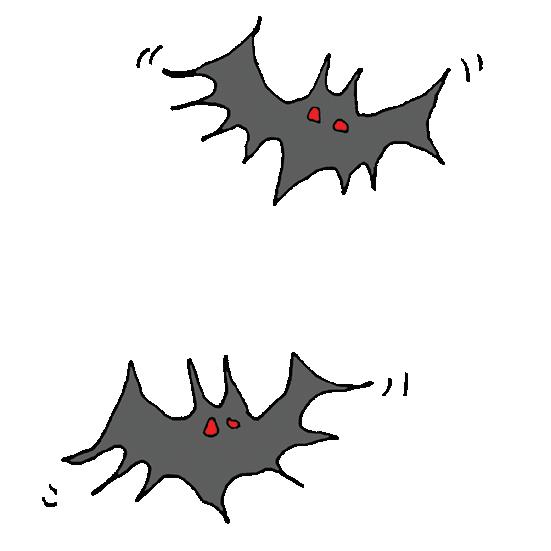
The Phantom Hiker of Grandfather Mountain
Grandfather Mountain, a state park located around Blowing Rock, has had its fair share of ghost sightings. One specific sighting is a recurring one, known as the “phantom hiker.” For several decades, people have reportedly seen the ghost of this lost hiker — an older, bearded man dressed in clothing from the midtwentieth century wearing an army backpack and carrying a walking stick. He’s said to appear along one of the park’s trails as evening approaches. He never says anything and doesn’t acknowledge any greeting,
Some believe he was a hiker who became lost in the woods and injured himself, unable to find his way out. Others believe he’s the spirit of a man who loved the mountain so much he never wanted to leave, even after he died. Like all visitors, he’s there to enjoy the beauty and wonder of Grandfather Mountain.
The Haunting of East Hall
East Hall was a dormitory built in 1952 at App State that is rumored to be inhabited by ghosts. This legend begins in 1977, when a student took their own life in the bathroom of the dormitory’s basement.
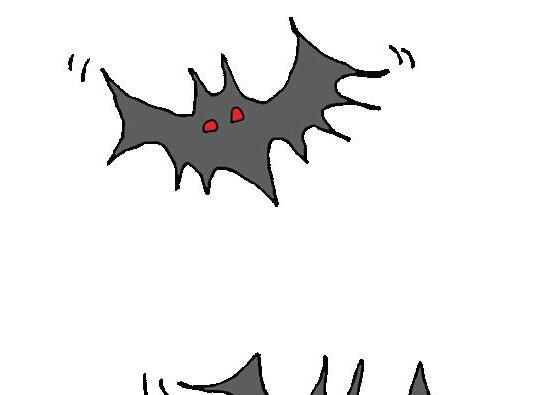
Since then, students have recalled countless paranormal activities in East Hall and other bizarre or inexplicable happenings. From hearing whispering voices in the empty halls to being pushed over by unseen forces, it is thought there might have been a ghostly presence on more than one occasion.
Now a retrofit art building, students have also reported unusual cold spots in the basement as well as a glowing blue mist. It has become tradition for students to share the urban legend with incoming freshmen, even referring to the residential building as the “Dorm of Doom” and as a Halloween attraction.

With a legend that separates App State from other universities and a reason to look further into traditions, students have something to look forward to — especially around Halloween.
The Demon Dog of Valle Crucis
In the 1860s, human remains were found in the woods near St. John’s Episcopal Church and cemetery. Believed to be victims of an apparent animal attack, the church’s minister told its members that Satan “had taken the form of an animal” and “killed the unrepentant.”
It is thought that the beast lurks in the cemetery at night, which two young men reported seeing in the late 1980s. On the night of a full moon, they drove past the church when a shadow leaped out from behind one of the graves into the road ahead. The shadow was a dog — not an ordinary dog, but the size of a full-grown man with eyes glowing bright red.
As the driver sped away, he could see the dog following them in the rearview mirror. Just before the beast could catch up, the car jumped over the bridge below the stream, and the dog stopped following them. The pair watched the eerie creature fade into the night and wondered what caused the animal to be restricted by the bounds of water.

Folklore is an important aspect of any culture, passing stories from generation to generation and providing insight into daily life hundreds of years ago. While urban legends aren’t the first to come to mind when discussing folklore, they are certainly in the category.
Urban legends seem silly, but they have cultural and historical significance to our beloved Appalachia. Whether you believe these tales or not, you can’t deny the impact these stories have had on the shaping of Appalachian culture. History thrives off of tradition.
Don’t discredit myths simply because there isn’t any validity to them. Legends don’t need to necessarily ring true or be proven as fact. Instead, they are meant to spark conversation, build community, uphold tradition and pique one’s interest in the history of the world around them.
It never hurts to wonder about the mysteries life has to offer. Next time you visit Grandfather Mountain, look out for the phantom hiker. If you drive by St. John’s Episcopal Church, beware of mythical creatures. And always be weary when stepping foot into East Hall.



In Western North Carolina, a trivial run to the local Walmart is underscored by scenes better fit for a National Geographic cover shoot. The dreamy, isoprene-induced haze effused by the Blue Ridge Parkway’s stoic oaks alone is enough to turn any insect-averse cubicle dweller into an avid nature enthusiast — but today’s generations might be the last to experience it.
Unsurprisingly, the United States’ current presidential administration has solidified itself as the enemy of all things green and life-sustaining. Thanks to President Donald Trump and his VIP fan club masquerading as a cabinet, the fate of Western North Carolina’s sprawling forests is teetering upon a flimsy stack of environmental policy rollbacks.
In 2023, the U.S. Forest Service published a destructive plan designed to quintuple logging practices in some of North Carolina’s most popular and biodiverse public lands. Since its introduction, the Nantahala and Pisgah Forest Plan has been a subject of public outrage, inspiring significant journalistic and legal retaliation from across the country.

In September 2024, Hurricane Helene ripped apart the mountains, forests and communities of Western North Carolina in a series of unpredictable and permanent ways. With its devastating winds, rain and subsequent floods, approximately 200,000 acres of vegetation in North Carolinian forests were lost to the storm. Despite this loss, the Nantahala and Pisgah Forest Plan is expected to continue.
Because of the five-fold increase of logging in the Pisgah and Nantahala national forests, old growth trees, delicate species habitats and remote backcountry will be destroyed for
Allison Lehan | Opinion Editor
the sake of commercial activity on a catastrophic scale. Coupled with posthurricane deforestation, 15 years from now, Western North Carolina’s forests might more closely resemble the back of Trump’s head than a thriving hub of biodiversity and public recreation.
The Nantahala and Pisgah Forest Plan serves as an important predecessor for the attitude the current administration has adopted toward environmental values. While it may have been finalized prior to his second presidency, Trump doubled down on the invasive outline following his January inauguration and has only accelerated plans for domestic logging since.
On March 28, the U.S. Department of Agriculture released a detailed map disclosing the areas that Trump’s new “Immediate Expansion of American Timber Production” executive order affects. The wildly irresponsible order rendered over 100 million acres of forested land across the country eligible for logging, circumventing vital conservation measures, like the Endangered Species Act, in favor of logging profits.
In tandem with the Nantahala and Pisgah Forest Plan, the map highlights significant swaths of the Nantahala and Pisgah national forests as areas of interest for the logging expansion initiative. It cites job opportunities and vague claims of wildfire management as reasons for its expedited and dramatic nature.
Other notable regions featured on the map include Northern California, Western Montana, Western Colorado and Northern Washington.
Considerable portions of Western North Carolina’s rolling forested slopes have been designated as an all-you-can-chop buffet for profithungry figures in the timber industry and U.S. politics. If this harrowing reality wasn’t relentless enough, broader blows to already inadequate environmental policies in the U.S. have also shown no abatement.
The One Big Beautiful Bill Act remains perhaps the White House’s most sweeping attack on natural resources to date. Besides serving as an accurate representation of its proponents’ literary comprehension abilities, the act effectively guts clean energy initiatives and pollution reduction programs and calls for massive increases in subsidies for oil and gas corporations.
The latest target of the Trump administration’s anti-environmental rampage is the 2001 Roadless Area Conservation Rule. Prohibiting road construction and timber harvests on nearly 60 million acres of national forests and grasslands, the rule has been under active threat of official termination since June 2025.
In the face of projected logging efforts and federal actions, like the One Big Beautiful Bill Act and the Roadless Rule’s rescission, the future of Western North Carolina’s public lands looks awfully bleak. Public land in the U.S. as a whole is in severe jeopardy.
Though these harsh circumstances expose the considerable shortcomings of hyper-commercialized logging, that doesn’t mean logging as a practice altogether is a gross violation of public lands. Through former President William McKinley’s Organic Act of 1897, national forests were founded partially for the purpose of sustaining U.S. domestic timber production. However, the rate of deforestation projected for North Carolina’s national forests is not in favor of long-term conservation or sustainment of the timber industry. Informed by a time perspective akin to that of a preschooler, its goal is very simple: to maximize profits as quickly as possible.
The threat the U.S. government poses to public lands is larger than concerns of not being able to witness the same scattered, fiery blooms of an Appalachian autumn again. It’s larger than the U.S. government itself.
Anyone who reaps the benefits of outdoor recreation, irreplaceable species habitat, breathable air,
drinkable water and a livable climate must take a stand against the daily choice the wealthy elite make to sacrifice the planet for flagrant financial gain.
Whether it be a Chimney Rock resident still navigating the aftermath of Helene, an App State student living in Boone or a tourist visiting the Nantahala National Forest for the first time, everyone who understands the impending ecological plight of Western North Carolina and the greater U.S. has a right to fight it — passionately and unapologetically. Lawsuits are being filed. Petitions are being signed. Protests are springing up everywhere. Despite criminally inadequate political media coverage, opportunities for resistance are as increasingly ubiquitous as the abuses of federal power they oppose.
The earth is not a piggy bank for the liver-spotted hands of fascist fossils like Trump to crack open and ravage. It is life itself — and when life is threatened, its beholders have an obligation to protect it.
Trees are worth being spoken for.
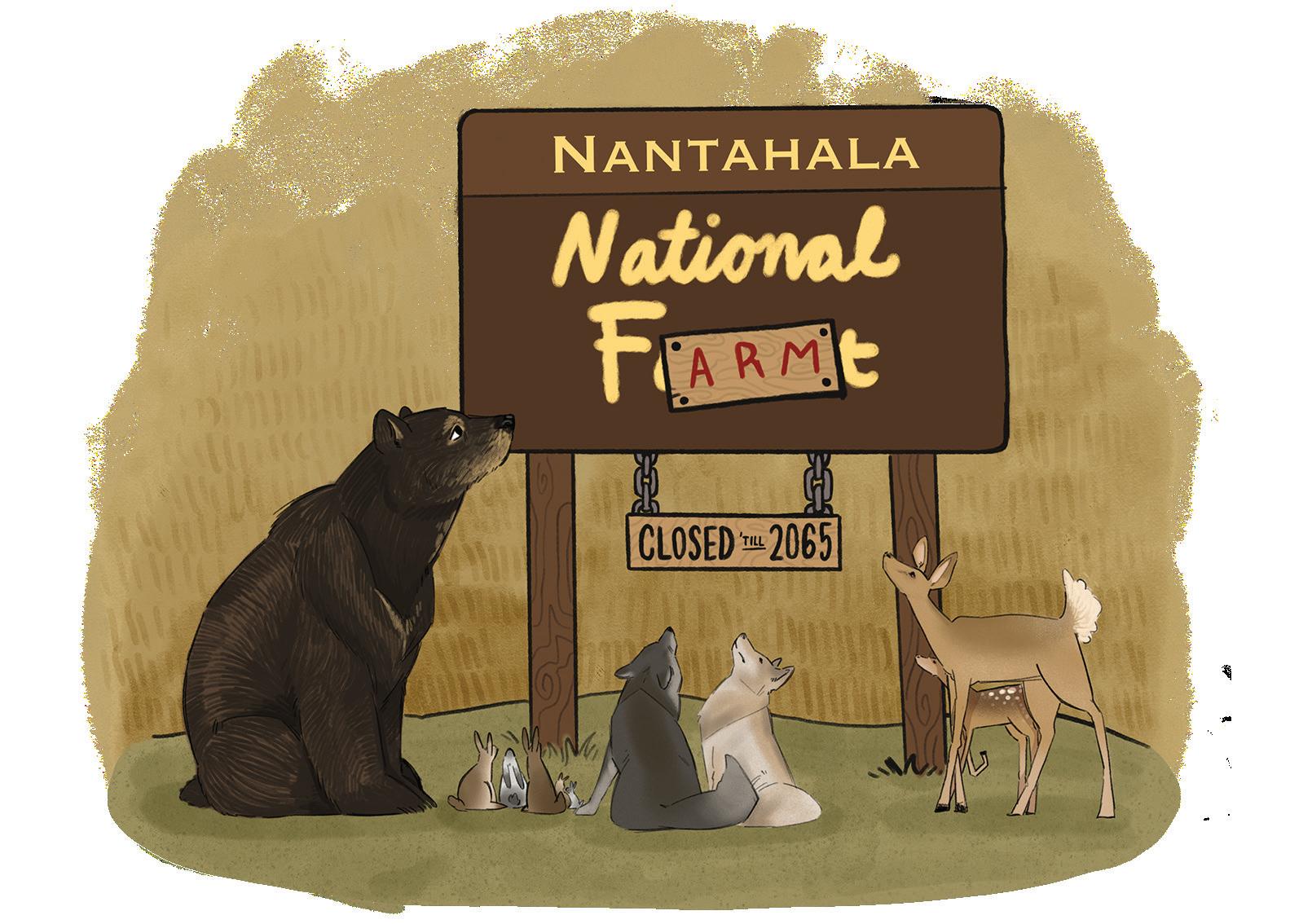
1. Carefully cut out around the mask.
2. Find a glue stick and a piece of cardboard big enough to fit the mask. Glue the mask to the cardboard.
3. Carefully cut the cardboard to match the paper outline.
4. Attach string to each side of the mask and tie the remaining ends together.
5. Enjoy!










